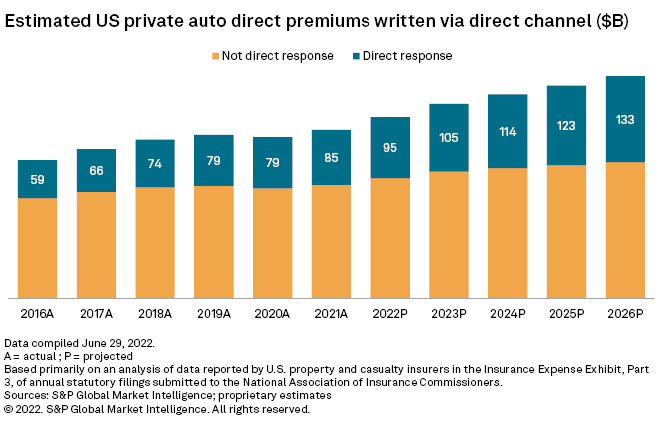As the role of embedded finance evolves, insurers and banks will need to create as seamless a consumer experience as possible, experts said during a June 13 S&P Global Market Intelligence webinar.
Embedded finance has gained traction over the last decade as an increasing number of businesses change the way they engage with banks and insurance by offering to bundle their services, said Tom Mason, a senior research analyst focused on the US financial technology sector.
"[Auto] dealer financing is a great example: You can get your loan at the dealership while you're buying a car," Mason said. "But what gets people really excited these days is the idea that you could embed it into ecommerce – you could actually purchase something online and either get insurance or loan while you're doing that."
This ability to bundle and make the buying experience more streamlined is appealing to the consumer, Mason added. While insurers are trending in the direction of partnering with platforms to offer products in a seamless matter, it must be beneficial to the platform, the insurer and the consumer to work, according to Isaac Espinoza, managing director and SVP at Root Inc.

Future of embedded insurance
As the customer experience in the US continues to emphasize ease, a higher utilization of bindable quotes is likely to be the future of embedded insurance, Espinoza said.
Some platforms in the US give potential insurance quotes, but those figures can be general or not accurate, Espinoza said. Even if there is follow-up information or insurance agent solicitation, Espinoza said the experience is not appealing to the consumer who is looking for an easy, tailored experience.
"I love insurance, but I don't know many people myself that enjoy shopping for it," Espinoza said. The shopping experience should be as painless as possible in order to add value and potentially win additional customers, according to Espinoza, rather than having the customer's decision be down to just who has the cheapest price quotes.
While property & casualty insurers get the most attention for bindable quotes, Espinoza said auto, home and life insurers are also offering these are well.
Banking likely to remain a force
As the appeal of embedded finance grows, banks are likely to continue to be important partners for fintechs, according to McKayla Wooldridge, a research analyst on the fintech team at S&P Global Market Intelligence.
Although some larger fintechs, such as Klarna, have pursued a bank charter, Woodridge said it's more common that fintechs realize that there's an opportunity to work with banks, which can handle compliance and risk management funding.
Additionally, embedded finance offers an interesting opportunity for smaller, community banks which can provide higher rates on debit transactions for fintechs. There are estimated to be less than 100 partner banks that are working with fintechs in the US today, according to Woodridge, and most are community banks.
"Community banks really can lean on fintechs to grow and increase their customer reach distribution," Woodridge said. "That's something that really is a need more so for community banks and smaller banks than for larger banks."
This article was published by S&P Global Market Intelligence and not by S&P Global Ratings, which is a separately managed division of S&P Global.



